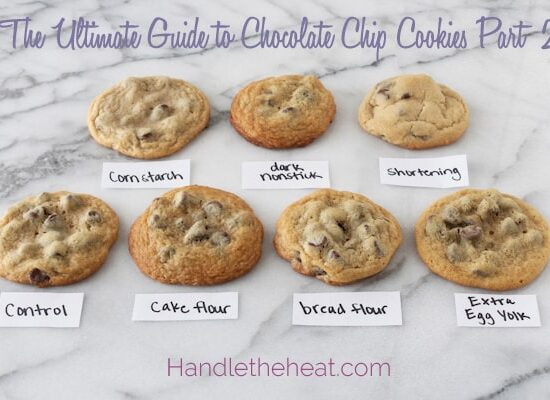
The Ultimate Guide to Chocolate Chip Cookies Part 2
This post may contain affiliate links. Read our disclosure policy.
Exciting post today! I’m sharing part 2 of my Ultimate Guide to Chocolate Chip Cookie series with you. CLICK HERE FOR PARTS ONE, THREE, and FOUR!!
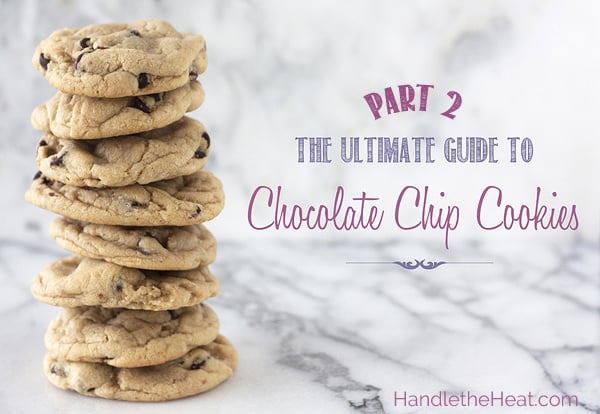
I used the Nestle Tollhouse Chocolate Chip Cookie recipe (at the bottom of this post) as my control and made little changes and variations in techniques and ingredients to show you how they affect the cookie. I halved and adapted the original Tollhouse recipe and that is what you see here. I kept everything the same through each recipe test, changing one key thing to see its effect and photographing the results for you. The first post was such a huge success that I knew I had to write another one with different ingredients and techniques tested. I listened to all of your requests for what you would like to see and tested many of them to share the results with you today. Keep reading to find out how dark nonstick baking pans, cornstarch, egg yolks, cake flour, bread flour, and shortening affect chocolate chip cookies.
Tools and Ingredients Used (when applicable):
-Spring-Loaded Cookie Scoop (Medium or 1 1/2-Tablespoon size)
–Chicago Metallic sheet pans
–Escali Digital Food Scale
–KitchenAid 5-quart Stand Mixer
–Oven thermometer
–Unbleached parchment paper
-Gold Medal All-Purpose Flour
-Fine sea salt
-Light brown sugar
-Large eggs
-Unsalted butter at a cool room temperature
-350°F oven and 10 minute baking time for each test
Control
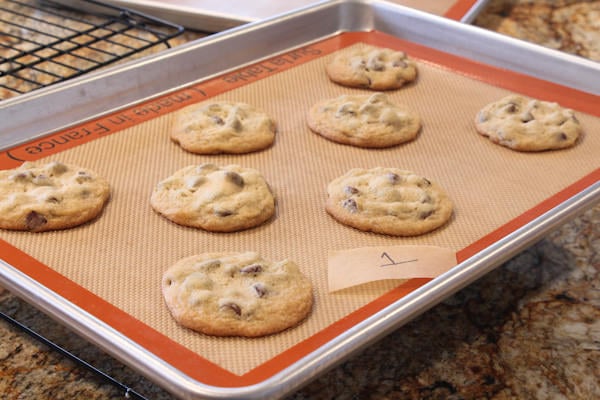
Note: This is my adapted version of the Nestle Tollhouse cookie recipe, which I used for each of these batches.
Ingredients:
1 cup plus 2 tablespoons (142 grams) all-purpose flour
1/2 teaspoon baking soda
1/2 teaspoon salt
1 stick (113 grams) unsalted butter, at room temperature
1/4 cup plus 2 tablespoons (75 grams) granulated sugar
1/4 cup plus 2 tablespoons (75 grams) packed light brown sugar
1/2 teaspoon vanilla
1 large egg
1 cup (170 grams) semi sweet chocolate chips
Directions:
Preheat oven to 350°F. Line baking sheets with nonstick baking mats or parchment paper.
In a medium bowl combine the flour, baking soda, and salt.
In the bowl of an electric mixer beat the butter, granulated sugar, and brown sugar until creamy, about 2 minutes. Add the egg and vanilla, beating well to combine. Gradually beat in the flour mixture. Stir in the chocolate chips. Scoop 1 1/2 tablespoon-sized balls and place onto prepared baking sheets.
Bake for 10 minutes, or until golden brown. Cool for 2 minutes before removing to wire racks to cool completely.
Dark Nonstick Baking Sheet:

Instead of using a Chicago Metallic sheet pans with a Silpat baking mat, I baked the control recipe directly on a dark nonstick baking sheet to test the differences between baking sheets. As you can see, the dark nonstick sheet significantly increased the browning on the bottom of the cookies. The cookies browned on the bottom more quickly, causing them to spread a little less. They also had more of a crunch due to the browning. If you have a problem with your cookies burning on the bottom, it may be due to your baking sheet. Luckily these ones didn’t burn and were quite tasty. However, I prefer to use unlined baking sheets to ensure my cookies won’t burn. 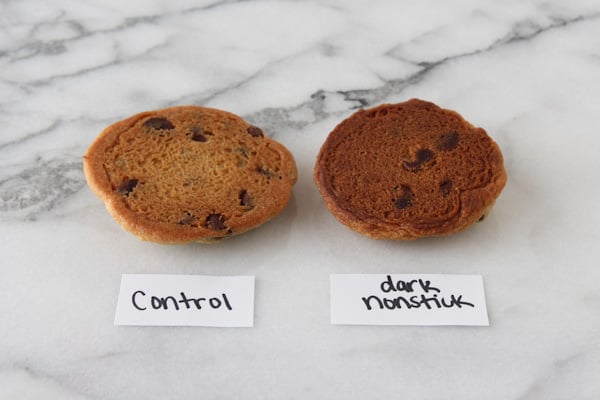
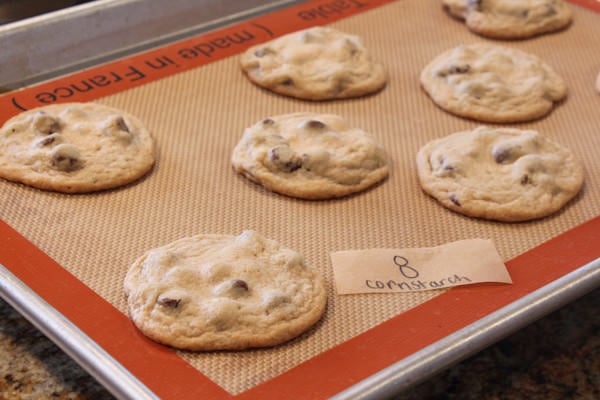
Cornstarch:
Added 2 teaspoons cornstarch to the cookie dough along with the dry ingredients. The cornstarch cookies were more pale in color but had crisp edges and very soft and slightly gooey interiors. I was surprised by the amount of spread these cookies had, I thought they’d be thicker considering cornstarch is a thickener. Sally of Sally’s Baking Addiction has a very popular cornstarch chocolate chip cookie recipe that calls for melted butter and chilling the dough so I wonder if one or both of those steps creates the best effect with the cornstarch. Sally’s cookie recipe also has a higher ratio of flour to butter compared to the Nestle Tollhouse recipe. I’m thinking these differences must produce a thicker cookie. 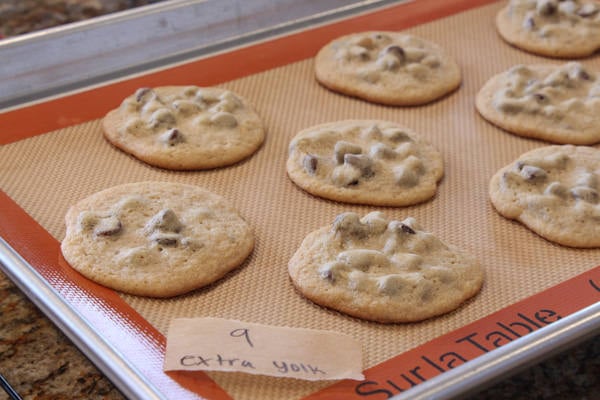
Extra Egg Yolk:
In addition to the whole egg called for in the control recipe, I added an extra egg yolk to this test. This produced ultra soft cookies with a little bit of a chew. Egg yolk is full of fat which acts as a tenderizer. This allows you to add softness to your cookies without having to add more butter. I think the extra liquid added to the dough from the yolk increased the cookie’s spread. If you want to add more softness to your cookies with an extra egg yolk, you may want to add a little more flour to create a thicker cookie.

Cake flour:
I swapped out all the all-purpose flour for 1 cup plus 2 tablespoons cake flour (127 grams) and the results were interesting. These cookies turned very brown and looked like they would be crispy but were actually very soft. Someone actually called these cookies “mushy.” They spread out fairly flat.
You can learn more about the science of cake flour here.
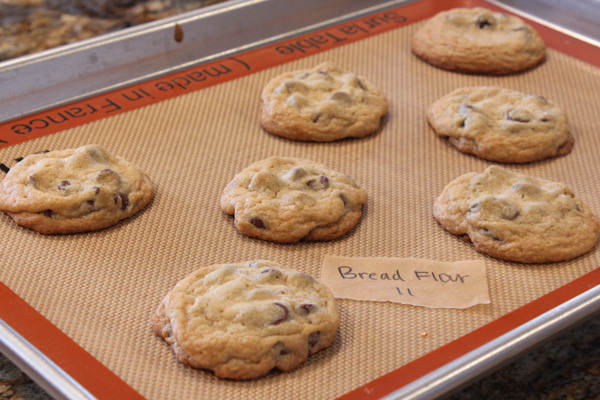
Bread flour:
I swapped out the all-purpose flour for 1 cup plus 2 tablespoons bread flour (142 grams) and the resulting cookies were thick and ultra chewy. My boyfriend and I both favored these cookies over many of the other trials. If you like thick, chewy cookies I would try substituting at least half of the all-purpose flour in your favorite cookie recipe with bread flour. It totally makes sense now why Alton Brown uses bread flour in his “The Chewy” cookie recipe.
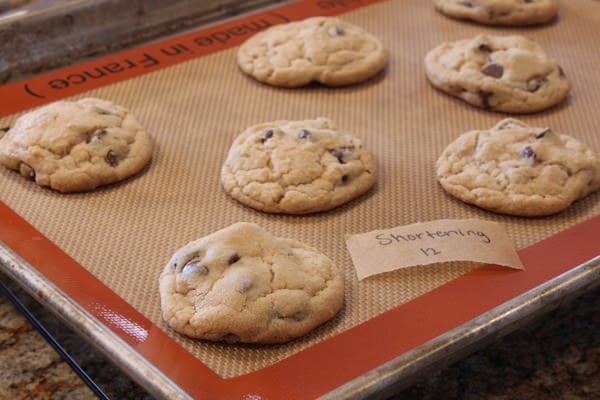
Shortening:
Okay, I had a LOT of requests to test of the differences between butter and shortening. I don’t use shortening in my house, I don’t like it. BUT I went out and got some Crisco just for you guys since you all asked so nicely! Plus I was quite curious about what kind of cookie shortening would produce since so many of you swear by using all shortening or half shortening half butter. For this trial I swapped out all of the butter with an equal amount of vegetable shortening and the resulting cookies were more pale and had a thicker texture that was crisp at the edges and soft in the middle. I thought these cookies would be super greasy but they weren’t. Tasting these shortening cookies made me realize that many bakeries and chain restaurants that serve chocolate chip cookies must use shortening because they had a similar taste and texture to those cookies. I was surprised to find these cookies didn’t taste super artificial or plastic-like, however they didn’t have that crave-worthy butter flavor either. The texture was fantastic but they definitely lacked flavor.
Comparison:
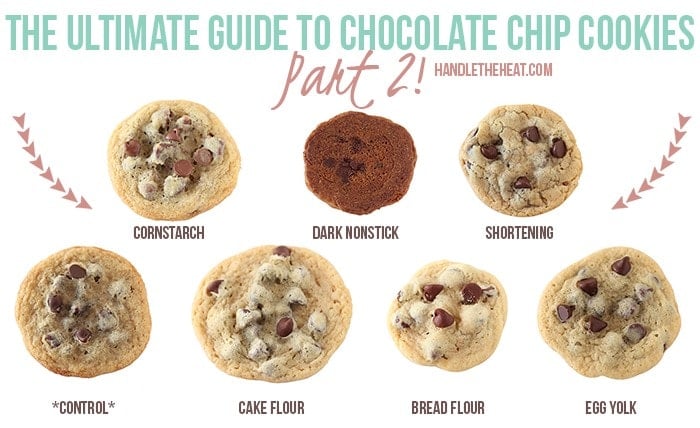
[updated photo 2015]
About Tessa...
I share trusted baking recipes your friends will LOVE alongside insights into the science of sweets. I'm a professionally trained chef, cookbook author, and cookie queen. I love to write about all things sweet, carb-y, and homemade. I live in Phoenix, Arizona (hence the blog name!)
Leave a Comment & Rating
Add a Review or Question
© Handle the Heat - handletheheat.com
Join the Handle the Heat Community
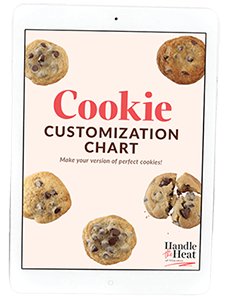
Instead of digging through cookbooks and magazines and searching the internet for amazing recipes, subscribe to Handle the Heat to receive new recipe posts delivered straight to your email inbox. You’ll get all the latest recipes, videos, kitchen tips and tricks AND my *free* Cookie Customization Guide (because I am the Cookie Queen)!

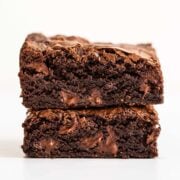
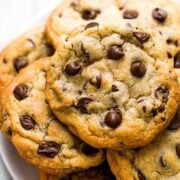

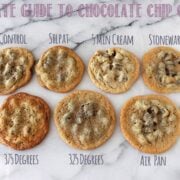
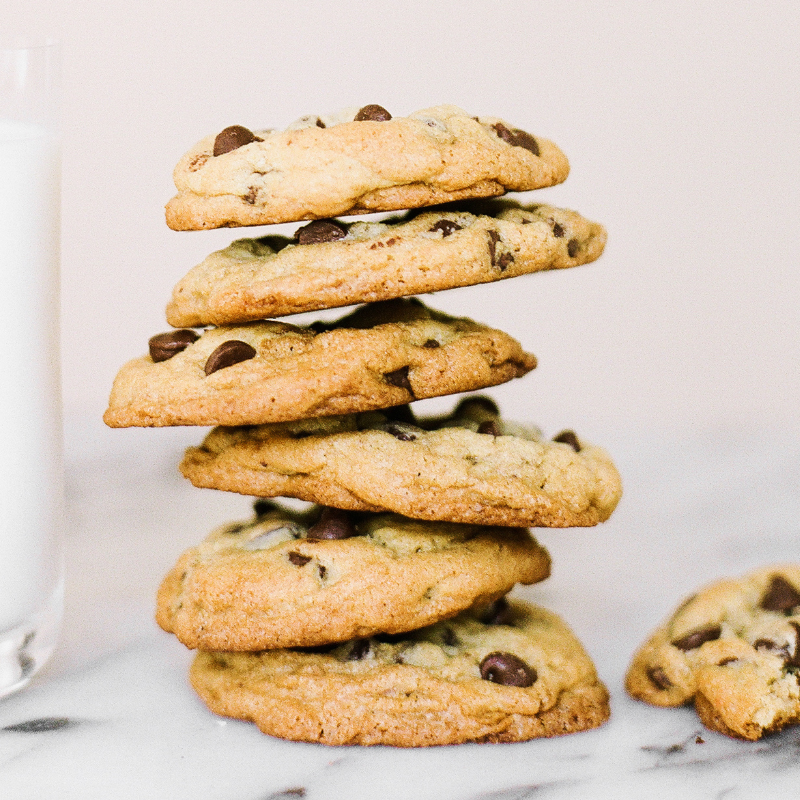



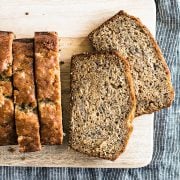
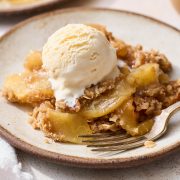
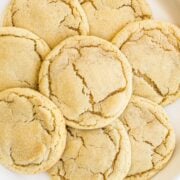
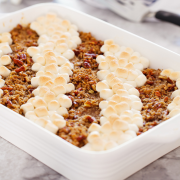

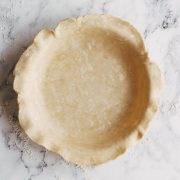
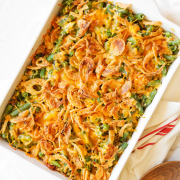
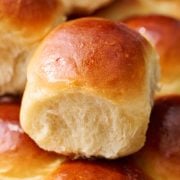
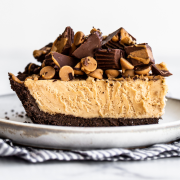

Thank you for doing this comparison. I’m a beginner baker and it helps to know the different effects ingredient s have. I’m looking forward to more articles.
Awesome guide on chocolate chip cookies. I am experimenting today with a tried and true recipe. I recently tried a cookie I like better than my own so I need to experiment and improve what I am doing. My control group is equal parts white and brown sugar, both baking powder and soda. I am pulling a couple levers at once by going with brown butter, 3:1 brown to white sugar ratio, and may reduce flour from 6 cups to 5 and add 1/2 cup corn starch.
Cornstarch is only a thickener when you mix it with water and stir vigorously. Not much water in a cookie & little stirring; plus, 2 teaspoons isn’t very much, all of which means you don’t see much change.
I replace about 10% of the flour with potato starch to make the cookies more delicate (less gluten formation).
My mother always used Cristo in her Tollhouse chocolate chip cookies, as do I now. Everyone has always loved them and ask what I do to make them so good.
Have you tried the butter flavor shortening or half butter half shortening?
hello I will add 2 teaspoons cornstarch to the cookie dough.. but against how much cups of flours plz? to each cup or to the whole dough?
I know this is an old post, but I just heard about it today, and I want to give you some important information about substituting shortening for butter.
You cannot do a 1:1 substitution, because butter is 80% fat, 15% water, and about 5% milk solids, whereas shortening is 100% fat.
To make the conversion, multiply the weight of the butter (in grams), by 0.8 to get the weight of the shortening you need.
Your recipe uses 1 stick of butter which is 4 oz/113 g. 113 X 0.8 = 90 g.
Then, to make up for the loss of moisture when substituting shortening for butter, multiply the weight of the butter by .15: 113 X .15 = 16g. 16g. is roughly 1 Tbls. milk or water.
Using the correct conversion (less fat and adding liquid) when making the substitution of shortening for butter may yield different results with your recipe.
It really doesn’t matter that much.
it actually does matter if you want a specific end result.
A friend and I are having a controversy on baking soda. (I know the difference between baking soda and baking powder, that’s not the controversy). I say all baking soda is the same, you can clean with it or you cook with it, whether is comes in a bag or a box. Since the box has a plate of cookies on the front, he says that’s the one for baking and the only kind you can consume. The big bag (13.5 oz) that I bought at a big box store (does not say “FOR CLEANING AND LAUNDRY USE ONLY”) doesn’t have the plate of cookies on it. Both containers say “Sodium Bicarbonate”. Is their a difference. I say no, he says yes.
I know their is a difference between baking soda and baking soda for laundry, it come in a different package. I would think the reason is so you don’t confuse the two.
Washing soda (or baking soda for laundry) has a pH of 11. Baking soda has a pH of 8. So using washing soda would give your recipes a very bitter flavor and probably cause some digestion issues. 🙂 They are not interchangeable. Source: Google.
I tried a cookie recipe that was half butter and half shortening and those were really good. The shortening does add something special to the equation. If you ever made a half shortening half butter frosting you would see what I mean. The best frosting I ever made was from the Milk Bar Birthday cake recipe and she used three fats butter, shortening and cream cheese. The result was nothing short of amazing especially with the glucose syrup added in to keep the other sugars from forming crystals so the effect was a light fluffy concoction like no other. I wondered if you thought of trying both of the fats together?
I didn’t have enough butter, so I I used some vegetable shortening and they don’t have much flavor.
Whatcan I add to the batter?
My cookie recipe calls for butter crisco, so you get that buttery flavor you were missing with regular shortening. (I know this post was written a long time ago, so someone may have already mentioned this.) I like all of these tips so people can modify their recipes to make cookies to their individual tastes, so thanks!
What a great idea this post was! Makes you realize all the different ways you can switch things up. I followed the Tollhouse recipe for High Altitude but replaced 1/2 butter with shortening, and added 1 tsp cornstarch. The cookies came out very light and soft without being too chewy. And no spread on the cookie sheet. A definite success!
When I was a kid my neighbor had a live-in cook/maid, Lilybelle.
The cookie jar was always full of chocolate chip cookies – which were light colored and crumbly –
as opposed to my mother’s Toll House cookies. They were dark tan and chewy – from the Nestle recipe.
Of course I preferred Lilybelle’s, but have never found out how to make them.
The body of the cookie was drier and crumbly – kind of like a Pecan Sandy.
Any suggestions?
thanks
I would recommend the butter flavored shortening to achieve that buttery flavor you were missing. Love the posts! Thanks for doing so much work.
I’m always on a look out for great food gift ideas. This ultimate guide looks great !
Thank you so much for this information!! You did a lot of work for all this! I’m curious if you’ve tried putting instant vanilla pudding mix into the batter? I’ve been baking it that way and love the result. I’m going to have to try it with bread flour now! Thanks again!
I found your website when searching on Tollhouse cookies butter vs margarine. Although you didn’t test with margarine, I found this to be one of the most useful articles I’ve seen. I have always made my cookies using butter but my mother always used margarine, and I think I remember her cookies being thicker.. I’m wondering if margarine adds more thickness like shortening does but provides more flavor. Thanks for taking the time to do all these tests. It was quite helpful!!!
I’m confused. Your video says completely different ingredients than the written recipe. What am I reading wrong; cause I know it’s me!
I tried the recipe and cookies came really thin and crisp. I followed the exact recipe and I dont know what went wrong.
Nice post! I really enjoyed it except the “plastic” part of shortening. Shortening is just vegetable oil that has been hydrogenated. I study biology and therefore have an extensive knowledge of organic chemistry. Unsaturated fat chains are bent and cannot be solid at room temperature because the molecules don’t fit together. These molecules have a double bonded carbon instead of hydrogen. If you break the double bond and add hydrogen to the molecules it becomes saturated. This makes the fat chains “straight” and they can fit together and be solid at room temperature. There is no reason why shortening would taste like plastic or artificial. It is vegetable oil that has been slightly modified to act like butter.
Hi Heidi – I find the taste of shortening to be off-putting, especially when compared to butter. I don’t actually think it’s plastic, ha! It’s the unappealing taste + the higher melting temperature that tends to leave behind a film / residue on the palate that reminds me of plastic. This is all compared to the taste and melt-in-your-mouth quality butter has 🙂
Is it true that you have to freeze the dough and have your cookies in balls when you do them?
My cookies go flat if I cook them the same day.